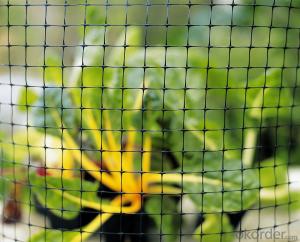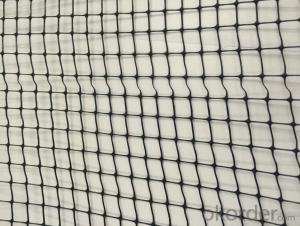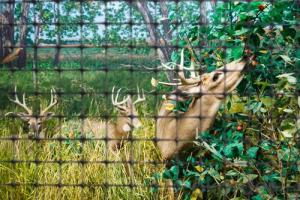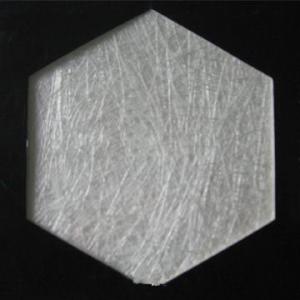Tcs Geotextile Deer Guard Fence Netting / Extruded PP Tcs Geotextile Deer Guard Fence
- Loading Port:
- China main port
- Payment Terms:
- TT OR LC
- Min Order Qty:
- 5000 m²
- Supply Capability:
- 1000000 m²/month
OKorder Service Pledge
OKorder Financial Service
You Might Also Like
Plastic netting plastic mesh breeding mesh
1. Plastic Plain Netting
Colour:white,black,blue and green, client's requirement.

2. Deer fence introduction:
Deer fencing is a very high strength, lightweight, 3.6ft to 7.3ft high deer fence manufactured from high strength polypropylene BOP plastic netting. Deer have a tendency to forage over large areas and the cost effective deer fencing offers a very effective deer control barrier.
The deer fence is black, UV stabilised and rot proof and unobtrusive as it merges into it's background. Deer fencing is very quick and easy to erect and each roll weighs less than 15kg. The Deer Netting should be installed by battening to the fencing posts to ensure the mesh filaments are not damaged.
3. Features of the deer neeting fence:
Deer fence is easy to erect and install
Plastic netting has a mesh hole size of 0.06" ,0.08",0.18",0.19"
The BOP plastic netting has a high tensile strength
Plastic mesh is UV stabilized and chemical resistant
Deer fencing rolls are lightweight
Deer fencing is a very high strength, lightweight 1.8m high Deer fence manufactured from polypropylene.
Deer fencing net is supplied on a 100m long roll
4. Features:
1). Low cost, while has superior strength
2). Has anti-tearing and friction capability
3). Wide range of product availability, some other mesh sizes and weights can also produced as per customers' requirements.
5. Package/Payment/Delivery:
Package: Usually packed by rolls in plastic film bags with labels inside and then loosely loaded in the container
6. FAQ:
Q1: What is your minimum order quantity?
A:The minimum order quantity is 5000 ,but it is negotiable.
Q2:What is your payment terms?
A: T/T,Western Union,Paypal,L/C...
Waiting to cooperate with you!
- Q: Highway on the highway geotextile laying program who has ah?
- According to your actual project, the Hongxiang Expressway geotextile can provide the overall solution. Hongxiang new material solution
- Q: Can geotextiles be used for reinforcement of landfills?
- Yes, geotextiles can be used for the reinforcement of landfills. Geotextiles are designed to provide strength, stability, and filtration in various applications, including landfill construction. They can be used as a reinforcement layer in landfill liners or caps to enhance the stability and prevent erosion of the waste containment system.
- Q: How do geotextiles help with soil stabilization in slope stabilization projects?
- Geotextiles assist in soil stabilization in slope stabilization projects by providing reinforcement and erosion control. These specialized fabrics are placed within the soil structure to enhance its strength, prevent erosion, and promote proper water drainage. By distributing loads and reducing soil movement, geotextiles help maintain the stability of slopes and prevent potential landslides or soil erosion.
- Q: What is the meaning of the geotextile What is its working principle
- Hot geotextile cloth is to isolate the heat and cover a layer of geotextile material. Advantages: light weight, the overall continuity is good, high tensile strength, corrosion resistance, anti-microbial erosion is good, easy construction. Non-woven geotextile properties: small pore diameter, good permeability, soft texture, and soil with a good combination. 2, construction (1) according to the embankment or base wide full section laying. (2) leave sufficient anchorage length on each side of the embankment or substrate. (3) To ensure integrity, when the lap method is continuous, the lap length should be 0.3 ~ 0.5m. When the seam is connected, the bond width is not less than 50mm. (4) site construction, material damage must be immediately repaired. Upper and lower seams should be alternately staggered, staggered length of not less than 0.5m. (5) try to avoid prolonged exposure.
- Q: How are geotextiles used in landfills?
- Geotextiles are used in landfills to help enhance the stability, drainage, and filtration of the waste disposal site. They are typically placed between the layers of soil and the landfill liner system to prevent soil erosion, control gas and liquid migration, and provide reinforcement for the overall structure.
- Q: Geotextile seepage seams how to deal with
- Quick drying cement
- Q: How do geotextiles help with soil erosion control?
- Geotextiles help with soil erosion control by acting as a barrier between the soil and water, preventing the loss of soil particles. They also improve soil stability by increasing its strength and reducing the impact of erosive forces such as wind or water flow.
- Q: Can geotextiles be used in agricultural applications?
- Yes, geotextiles can be used in agricultural applications. They are commonly employed to control erosion, improve soil stabilization, and aid in drainage systems in agricultural fields. Geotextiles can help retain soil moisture, prevent weed growth, and protect crops from wind and water damage.
- Q: How do geotextiles help with vegetation establishment?
- Geotextiles help with vegetation establishment by providing a stable and favorable environment for plant growth. They prevent erosion by holding soil in place, allowing roots to establish and anchor the vegetation. Geotextiles also retain moisture and regulate soil temperature, promoting optimal conditions for seed germination and plant growth. Additionally, they protect young plants from weed competition, herbicide leaching, and wildlife damage, ultimately enhancing the success of vegetation establishment.
- Q: What are the advantages of using geotextiles in green space development?
- There are several advantages to using geotextiles in green space development. Firstly, geotextiles can help with soil erosion control by stabilizing the soil and preventing its displacement. This is particularly important in areas with slopes or where heavy rainfall is common. Secondly, geotextiles can improve soil drainage, allowing excess water to pass through while retaining the necessary moisture for plant growth. This helps prevent waterlogging and promotes healthier root systems. Additionally, geotextiles act as a barrier, preventing weed growth and reducing the need for chemical herbicides. Finally, geotextiles can enhance the longevity of green spaces by providing a protective layer between the soil and other materials, such as gravel or sand, which can prevent contamination and preserve the overall quality of the space.
Send your message to us
Tcs Geotextile Deer Guard Fence Netting / Extruded PP Tcs Geotextile Deer Guard Fence
- Loading Port:
- China main port
- Payment Terms:
- TT OR LC
- Min Order Qty:
- 5000 m²
- Supply Capability:
- 1000000 m²/month
OKorder Service Pledge
OKorder Financial Service
Similar products
Hot products
Hot Searches
Related keywords


































